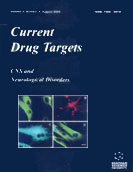Abstract
This review discusses the current understanding of organophosphate induced delayed polyneuropathy (OPIDP) with emphasis on molecular mechanisms, pathogenesis and possibilities for prevention/therapy. OPIDP is a rare toxicity caused by certain organophosphorus compounds (OP) characterized by degeneration of some long axons in the central and peripheral nervous system that appear about 2-3 weeks after exposure. The molecular target for OPIDP is considered to be an enzyme in the nervous system known as neuropathy target esterase (NTE). NTE can be inhibited by two types of inhibitors: a) phosphates, phosphonates, and phosphoramidates, which cause OPIDP when > 70% of the enzyme is inhibited, and b) phosphinates, carbamates, and sulfonyl halides which inhibit NTE and cause either protection from, or promotion, of OPIDP when given before or after a neuropathic OP, respectively. The ability of a NTE inhibitor to cause OPIDP, besides its affinity for the enzyme, is related to its chemical structure and the residue left attached to the NTE. If such residues undergo the aging reaction i.e. the loss of an alkyl group bound to the enzyme, those OPs usually have a high likelihood of causing OPIDP. Protection from neuropathic doses of OP inhibitors is obtained when NTE is inhibited with nonageable inhibitors. Promotion of OPIDP involves another site besides NTE because it can occur when all NTE is affected. It is now known that this other site is similar to NTE in that it is also sensitive to mipafox but at much higher concentrations. Promotion affects either the progression or expression of OPIDP after the initial biochemical effect on NTE. Some recent observations suggest that development of OPIDP in hens can be influenced by atropine, oximes and methylprednisolone when they are given before or soon after neuropathic OPs.
Keywords: organophosphorus, organophosphates, nervous system, organophosphate induced delayed polyneuropathy, neuropathy target esterase, promotion, mechanisms, prevention, treatment, atropine
 3
3

















